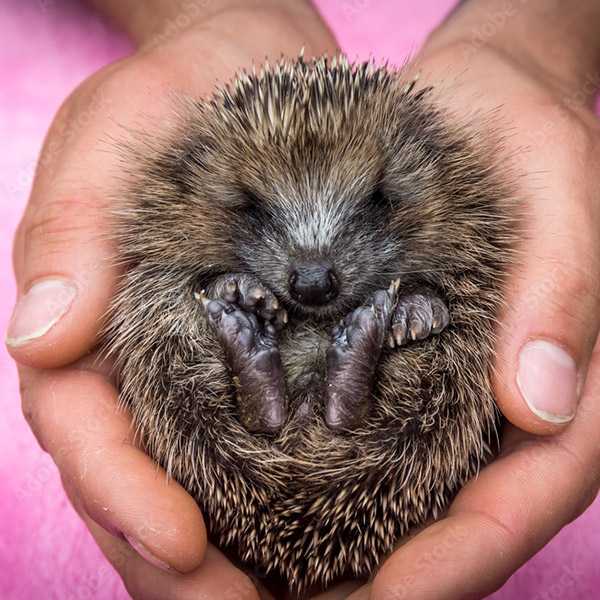For the past year and a half, Katie Crawford one of our dedicated ecologists has been involved in hedgehog rehabilitation. This has provided Katie with an incredible opportunity to get up close with these amazing animals, understand common diseases and behaviours and expand her knowledge of hedgehogs.
Hedgehogs are nocturnal insectivores that are distributed all over the UK- their spikes offer protection from predators. These creatures come to the rescue centre for many reasons, and this can help inform their ecology.
Why do they come to rescue centres?
Most hedgehogs come to rescue centres because they have been attacked by a cat, hit by a car or have been spotted out during daylight hours. Faecal samples are taken and analysed to look for internal diseases, fluids are always given and antibiotics if needed. One of the most common issues hedgehogs get is ringworm, which is a fungal disease that can cause their skin to get scaly and in extreme cases can cause them to lose all their spikes. Hedgehogs are one of the easiest animals to inject as they have a lot of space in between the muscle that contracts their spikes.
What do you feed them?
Hedgehogs love wet or dry cat food, although some can be picky eaters.
Baby hedgehogs, or hoglets as they are also known, will eat formula (this is initially syringe fed to the babies); rescue centres often slowly mix a high fat mousse in with the milk to get them started on solid foods.
Is it expensive?
Running a rescue is both costly and time-consuming- with the average rescue centre having over 100 hedgehogs currently, it takes a team of volunteers (usually 4) around 2-3 hours every day to clean them out. Each hedgehog will eat a pouch of wet food a day, so costs add up!
Do they hibernate in care?
If there is something that needs to be treated, the hedgehog will be put in a heated shed which will keep them from hibernating so they can be rehabilitated. A separate shed is used for hibernating hedgehogs; however, food and water is kept topped up as hedgehogs will often wake up numerous times during the winter to forage, especially with mild weather!
When a hedgehog is going to hibernate, there are many signs that can be can observe. Their faeces will turn green, as they are clearing out their intestines, they will stop eating and dramatically reduce movement. These signs may be mistaken for illness or vice versa.
How do rescue centres keep track of them all?
The rescue centre that Katie has been volunteering at assigns all new hedgehogs a box number and a name; this is to help keep track of the masses of hedgehogs that come through its doors. Name themes have included: Harry Potter, Lord of The Rings, Wildflowers, Trees and some are even named after volunteers!
Katie has found it rewarding to see hedgehogs that the centre has helped release into the wild, although not all make it. As soon as the weather warms up, they will be released near where they were found. Research has shown that hedgehogs can be very successful when released following rehabilitation, even juveniles that had been raised in captivity. (Morris PA. Hedgehog rehabilitation in perspective. Vet Rec. 1998 Dec 5;143(23):633-6. PMID: 9881442).
How can I get involved?
Many of the rescue centres in the UK are completely overrun come spring and summer, there are lots we can do to help. Lots of rescues take volunteers and this is an incredibly fulfilling role. Many rescue centres also ask people to foster hedgehogs over winter (although be warned they are very smelly creatures!). Donations are always welcome to rescue centres and if you are very willing, you can even get involved directly and attend a rehabilitation course to rehabilitate your own!
For more information on hedgehog rescue please contact ACD 01666 825646.



